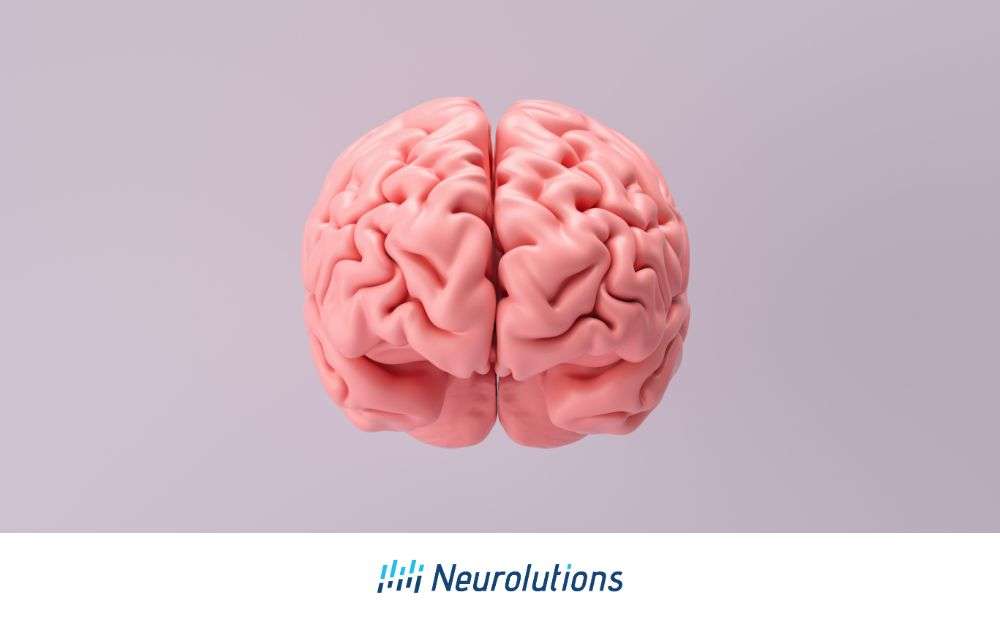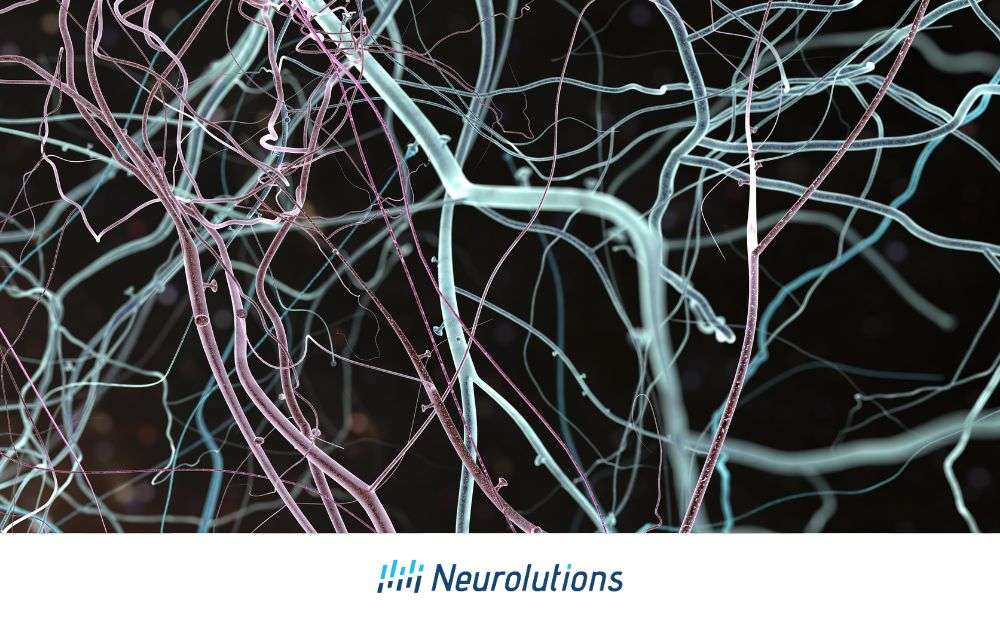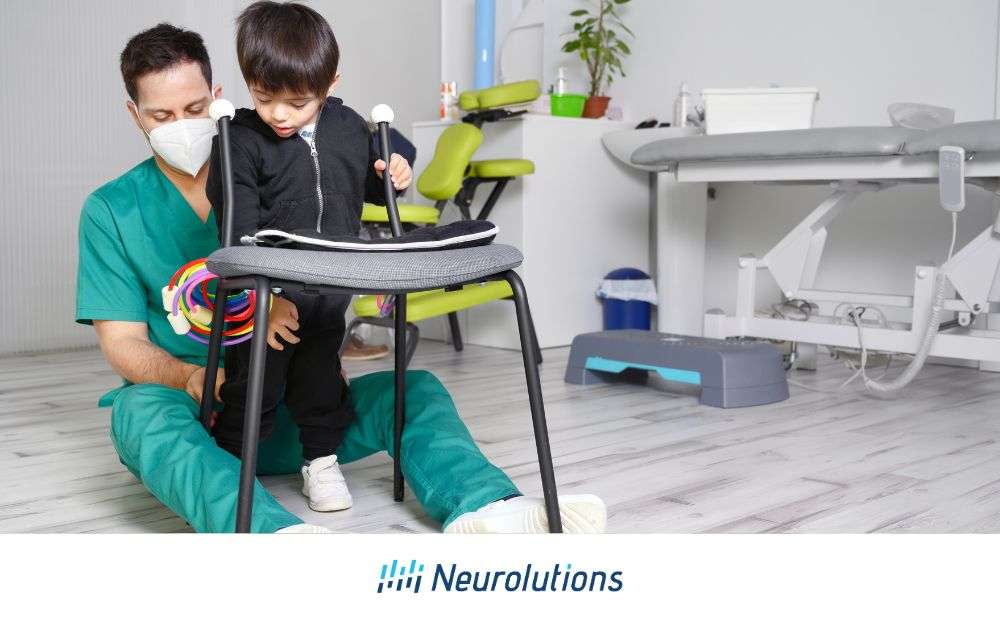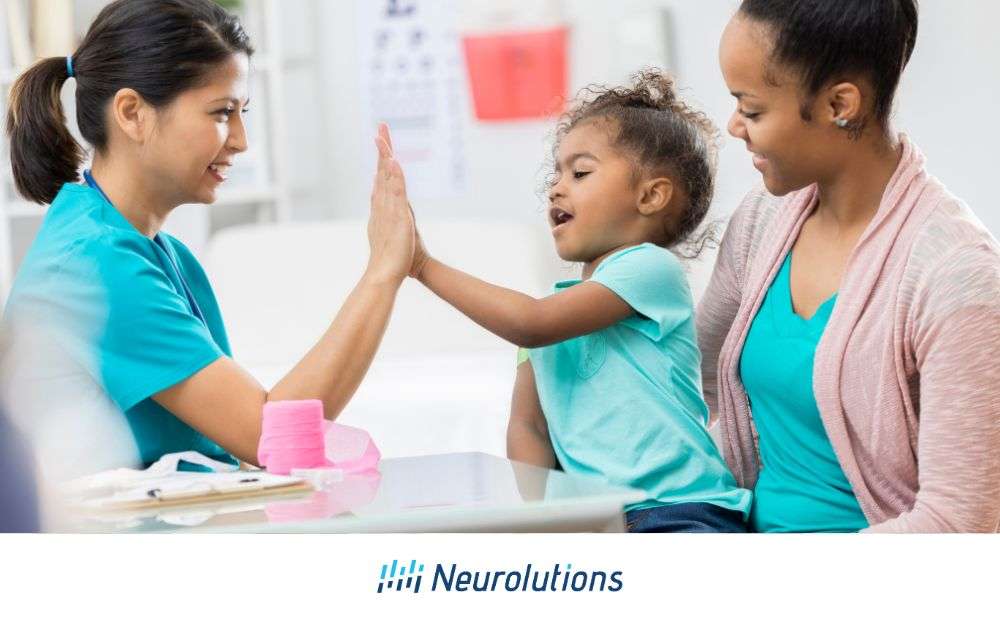Strokes are a major health issue that can cause serious brain damage. However, with prompt medical intervention and effective rehabilitation approaches, outcomes and quality of life for stroke survivors can be greatly enhanced.
Stroke is the leading cause of death after heart attacks. If someone has a second stroke, it’s often more considered a massive stroke (1, 2). Massive stroke is a medical emergency requiring rapid medical attention because a large portion of the brain has been affected. While a massive stroke can cause major brain injury, recovery to an independent level of functioning is still possible. Strokes can be caused by a blood clot or bleeding in the brain, and the damage depends on the location within the brain and the severity of the brain injury.
The involvement of both hemispheres of the brain, rather than the typical injury to only one of the hemispheres, can leave the stroke survivor with more extensive paralysis or weakness and other adverse effects. In particular, an injury to the brain stem – which controls heartbeat, blood pressure, and breathing – is highly-linked to massive stroke and can result in death (3). The purpose of this article is to describe the causes, symptoms, treatment, and rehabilitation approaches after a massive stroke.
What is a Massive Stroke?
A massive stroke usually happens because of a blood clot in the brain. It’s very serious and can affect a large portion of the brain.
Most strokes (87%) happen when a blood clot blocks blood flow to the brain, damaging tissues and cells (4). This type of stroke is termed ischemic stroke. The remaining 13% fall victim to hemorrhagic stroke, caused by bleeding within the brain. A hemorrhagic stroke is more likely to result in massive stroke primarily because bleeding in the brain is more likely to injure a wider area (5). However, if more than one blood clot occurs during an ischemic stroke, multiple parts of the brain can be affected and result in a massive stroke.
Identify the Symptoms: From Mild to Massive Strokes
Stroke symptoms include numbness, confusion, and severe headaches. A massive stroke can lead to unconsciousness or worse.
The symptoms of a mild-to-severe stroke are any or all of the following (6):
- Numbness, weakness, or paralysis of one side of the body (including the face)
- Sudden onset of confusion
- Sudden inability to speak or understand language
- Sudden onset of blindness or double-vision
- Sudden onset of severe headache with no known cause
- Sudden dizziness and loss of coordination and/or ability to maintain balance
A severe stroke often leads to unconsciousness or a coma, but other symptoms might appear first. A coma may spontaneously reverse within a few days as new brain cells replace damaged ones. However, massive strokes are frequently associated with an extended period of coma and concurrent limb paralysis or pronounced weakness affecting both sides of the body. Additionally, speech and language comprehension deficits are often a consequence of massive stroke.
Exploring the Aftermath: Vegetative State and ‘Locked In’ Syndrome
After a massive stroke, some people might not be aware of their surroundings or be unable to move or speak; however, this is not common.
In a “vegetative” state, a person who had a massive stroke is alive but not aware or thinking as a result of the severe brain damage. In contrast, when a survivor is in a “locked in” state, they are awake but completely unable to move or speak (7). The occurrence of “locked in” syndrome in stroke survivors is typically linked to injury within the brain stem area (8).
Most survivors of massive stroke will not experience either a vegetative or a locked in state, but will likely have paralysis or pronounced weakness in the limbs that severely impact motor skills. Since the ability of the nerves in the brain to transmit signals to the spinal cord is impaired in massive strokes, a survivor of a massive stroke is also likely to experience incontinence.
Assessing the Risks: What Leads to a Massive Stroke?
Factors like artery hardening, high blood pressure, and diabetes can increase the risk of having a severe stroke.
The same causes and risk factors applicable to mild-to-severe strokes can result in a massive stroke. These include (9):
Atherosclerosis:
Atherosclerosis (artery hardening) often comes from long-term high ‘bad’ cholesterol levels. Atherosclerotic plaques can break off and form blood clots that travel to the brain or form in the carotid arteries that directly deliver blood to the brain.
High Blood Pressure (BP):
High blood pressure is another cause of atherosclerosis. High BP can cause the arteries to either become clogged with plaque or bulge and eventually burst, resulting in a brain bleed.
Diabetes:
Diabetes is recognized to boost the likelihood of developing high BP and atherosclerosis, thus increasing the likelihood of a stroke.
Lifestyle factors:
Obesity, smoking, methamphetamine addiction, and consuming a daily diet high in saturated fat that increases LDL blood cholesterol level are all linked to an increased risk for stroke.
As mentioned, experiencing a prior stroke is also a risk factor for massive stroke. Most importantly, it is a risk factor for a second stroke of any level of severity, so stroke survivors, as part of their medical recovery, need to address the risk factors that predisposed them to a stroke. If a lifestyle factor such as obesity predisposed them to a stroke, then weight loss will need to be a component of their stroke recovery process.
Act Quickly: The Importance of Immediate Care for Strokes
Quick medical help is crucial for anyone showing stroke signs to prevent more damage and improve recovery chances.
If a stroke is suspected, quick medical help is needed to avoid more serious problems. This typically occurs in a hospital Emergency Room (ER), where diagnostic tools are utilized to pinpoint the cause of the stroke. If the cause is a blood clot, then blood-thinning medication is typically provided immediately. If the cause is hemorrhagic stroke, then the bleeding needs to be stopped so that the destruction to the brain’s tissue and cells is halted. This may require both a surgical procedure to stop the bleeding and medication to increase the ability of the blood to clot.
The faster medical treatment is started, the less likely it will be that the stroke survivor progresses to the level of a massive stroke (10).
Comparing Rehabilitation Approaches in Massive Stroke versus Mild-to-Moderate Stroke
Recovery from a massive stroke is harder and takes longer because the brain damage is more severe, often affecting movement, speech, and cognition.
There are significant differences in the overall rehabilitation approach in massive stroke versus mild-to-moderate stroke. With the aid of physical, occupational, and speech therapy, those who have survived a mild-to-moderate stroke are able to regain lost abilities and physical movements. This is due to the brain’s neuroplasticity: the ability of the brain to develop new neural networks that bypass those that were destroyed (11). For example, practicing the physical movements required in self-feeding and cooking during occupational therapy (OT) sessions can trigger the development of new brain cells and new nerve signaling pathways within the brain and to the spinal cord.
After a massive stroke, the widespread damage greatly reduces the brain’s ability to heal itself. This means that reacquiring lost functions and abilities through the development of new neural networks is more difficult. Survivors of massive strokes also typically spend more time in a coma or with weakened or paralyzed muscles, resulting in diminished muscle tone and strength. Similarly, their capacity to speak and/or understand spoken language may be affected. Moreover, adverse cognitive effects like heightened attention/concentration issues, short-term memory loss, and decision-making deficits may be more pronounced.
For this reason, the length of time needed in a rehabilitation program may be longer and involve more therapeutic modalities following a massive stroke than for a less severe stroke. In addition, the prognosis and goal of rehabilitation may be less than a resumption of full independent functioning compared to survivors with a less severe stroke diagnosis.
Starting Recovery: Occupational and Physical Therapy for Survivors of Massive Strokes
Occupational and physical therapy helps survivors recovering from massive strokes restore some muscle function.
Passive or active exercises are commonly prescribed by occupational therapists and physical therapists for individuals with paralyzed or weak muscles following massive stroke. These exercises aim to improve muscle strength, range of motion, and overall function.
Passive exercises include physical movement/assistance of the limb and joint. Sometimes, devices with electric currents are utilized (e.g. electrical stimulation). Electrical stimulation can help improve muscle strength, prevent muscle atrophy (wasting), and enhance circulation in paralyzed or weakened muscles. It can be particularly beneficial for individuals who are unable to perform active movements due to severe weakness or paralysis following a stroke.
Survivors of massive strokes often require passive and active assisted exercises for an extended duration (12). This is primarily because these survivors tend to be hospitalized and bed bound for far longer, and they frequently face a higher chance of prolonged limb paralysis, a phenomenon called learned non-use, and additional complications. It is critical for occupational and physical therapy early mobility intervention-stroke rehabilitation to begin early on stroke for motor skill recovery to occur and for a more favorable prognosis (13).
Enhancing Motor Recovery with the IpsiHand System
Promoting the use of muscles in active exercise is also crucial for stroke survivors as they regain function. Active exercise not only helps strengthen muscles, but also enhances coordination, proprioception (awareness of body position), and overall functional abilities.
Breakthrough therapies that address motor rehabilitation, such as IpsiHand, can offer promising opportunities for stroke survivors to regain motor function, even if they have significant motor impairments following a massive stroke. The IpsiHand System works off of brain-computer interface (BCI) technology that allows individuals to control a handpiece worn on the weak hand using their brain signals alone.
Here’s how IpsiHand System works:
Brain Signal Detection: The system detects and interprets brain signals sent from the user’s motor cortex using non-invasive electroencephalography sensors (EEG) within the headset.
Motor Imagery: Stroke survivors are trained in therapy sessions to imagine or visualize isolated finger movements with their affected hand. They are also trained to “relax” their thoughts. These mental tasks generate distinct patterns of brain activity that can be detected by the BCI system in the IpsiHand software.
Brain Signal Decoding: The BCI system analyzes the recorded brain signals and decodes the user’s intentions based on the patterns associated with motor imagery tasks. Advanced signal processing algorithms and machine learning techniques are often used to interpret the signals and translate them into commands for controlling the device or virtual avatar.
Real-Time Feedback: As the user performs motor imagery tasks, they receive real-time feedback from the Handpiece guiding their hand open and closed.
The IpsiHand System is designed to promote motor recovery, improve motor function, and facilitate neuroplasticity by forging new neural pathways in chronic survivors that may have experienced a massive stroke.
Boosting Recovery: Therapeutic Interventions to Boost Cognitive Functioning and Mood
Activities like art and games in therapy can help improve thinking and mood in people who have had massive strokes.
Group activities like art, singing, and games can help people with massive strokes think more clearly. Since stroke-related depression due to impairment of the release of specific brain chemicals is common in stroke survivors, therapy aimed at improving mood and maintaining motivation to participate in rehab are also important components of an overall stroke recovery program. Notably, improving cognition and mood in survivors of massive stroke can increase the likelihood that the stroke survivor will be able to gradually reacquire the ability to independently perform Activities of Daily Living (ADLs) such as feeding and dressing through PT and/or OT programs.
Cognitive intervention, often provided by occupational and speech therapy, is also important for individuals who have had a massive stroke. Cognitive therapy aims to address and improve cognitive impairments resulting from extensive brain damage, such as difficulties with memory, attention, language, problem-solving, and executive functions. The specific approach to cognitive therapy may vary based on the individual’s unique needs and deficits, but it may include cognitive rehabilitation, compensatory strategy training, technology-assisted interventions, and environmental modifications.
Prevention Strategies to Reduce the Risk of Future Strokes
Regular medical check-ups and healthy lifestyle changes can help lower the risk of having another stroke.
Regular follow-up medical care is an essential strategy for preventing a future stroke, as blood pressure, blood cholesterol level, and other risk factors can be monitored. Changing lifestyle habits, like eating better to avoid Type-2 diabetes, can help prevent another stroke. Other prevention strategies are quitting smoking, reducing emotional stress, and engaging in an exercise routine of at least 20 minutes each day.
Conclusion
Massive strokes are due to the same causes as other strokes, but the brain injury is more widespread. Of the two main types of stroke, ischemic and hemorrhagic, massive strokes are more likely to be hemorrhagic (bleeding) (14). People who survive massive strokes are far more likely to experience permanent disability and limb paralysis, as well as long-term dysphagia (difficulty swallowing) and speech/language impairments. While up to 40% of all stroke survivors have some limitations in performing their usual routines at six months post-stroke, only 10% require permanent placement in a Skilled Nursing Facility (SNF).
Survivors of massive stroke may require more long-term assistance in performing ADLs, but involvement in intensive therapeutic rehabilitation plus home-based support can enable these survivors to achieve a greater level of independence than previously expected. In turn, this increased independence promotes a better quality of life and decreases stroke-related depression.
References:
- Donkor ES. (2018). Stroke in the 21stCentury: A Snapshot of the Burden, Epidemiology, and Quality of Life. Stroke Research and Treatment 2018: 3238165. (Open access). Webpage: https://www.ncbi.nlm.nih.gov/pmc/articles/PMC6288566/
- Hardie K, Hankey GJ, Jamrozik K, et al. (2004). Ten-Year Risk of First Recurrent Stroke and Disability After First-Ever Stroke in the Perth Community Stroke Study. Stroke 35(3): 731-735. Webpage: https://www.ahajournals.org/doi/10.1161/01.str.0000116183.50167.d9
- Johns Hopkins Medicine. Effects of Stroke. Webpage: https://www.hopkinsmedicine.org/health/conditions-and-diseases/stroke/effects-of-stroke
- Centers for Disease Control (CDC). Stroke Facts. Webpage: https://www.cdc.gov/stroke/facts.htm#:~:text=About%20185%2C000%20strokes%E2%80%94nearly%201,have%20had%20a%20previous%20stroke.&text=About%2087%25%20of%20all%20strokes,to%20the%20brain%20is%20blocked.
- Salvadori E, Papi G, Insalata G, et al. (2020). Comparison between Ischemic and Hemorrhagic Strokes in Functional Outcome at Discharge from an Intensive Rehabilitation Hospital. Diagnostics (Basel). 11(1): 38. Webpage: https://www.ncbi.nlm.nih.gov/pmc/articles/PMC7824133/#:~:text=Overall%2C%20the%20general%20prognosis%20of,many%20different%20mechanisms%20%5B4%5D.
- National Institute on Aging (NIA). Stroke: Signs, Causes, and Treatment. Webpage: https://www.nia.nih.gov/health/stroke
- Stroke Association. Locked-in syndrome after brain stem stroke. Webpage: https://www.stroke.org.uk/effects-of-stroke/locked-in-syndrome
- Stroke Association. Locked-in syndrome after brain stem stroke. Webpage: https://www.stroke.org.uk/effects-of-stroke/locked-in-syndrome
- Mayo Clinic. Stroke. Webpage: https://www.mayoclinic.org/diseases-conditions/stroke/symptoms-causes/syc-20350113
- Scripps Health. (May 1, 2023). Act Fast to Stop a Stroke. Webpage: https://www.scripps.org/news_items/6067-act-fast-to-stop-a-stroke
- Alia C, Spalletti C, Lai S, et al. (2017). Neuroplastic Changes Following Brain Ischemia and their Contribution to Stroke Recovery: Novel Approaches in Neurorehabilitation. Frontiers in Cellular Neuroscience 11: 76. Webpage: https://www.ncbi.nlm.nih.gov/pmc/articles/PMC5352696/
- Brenner I. (2018). Effects of Passive Exercise Training in Hemiplegic Stroke Patients: A Mini-Review. Sports Medicine and Rehabilitation Journal 3(3): 1036. Webpage: https://www.remedypublications.com/open-access/peffects-of-passive-exercise-training-in-hemiplegic-stroke-patients-a-mini-reviewp-2272.pdf
- National Institutes of Health (NIH), NIH Research Matters. (September 28, 2021). https://www.nih.gov/news-events/nih-research-matters/critical-time-window-rehabilitation-after-stroke
- Unnithan AKA, Das JM, and Mehta P. (Last update: May 8, 2023). Hemorrhagic Stroke. In: StatPearls [Internet]. StatPearls Publishing: Treasure Island, FL. Webpage: https://www.ncbi.nlm.nih.gov/books/NBK559173/
- American Stroke Association. Rehab Therapy After a Stroke. Webpage: https://www.stroke.org/en/life-after-stroke/stroke-rehab/rehab-therapy-after-a-stroke




